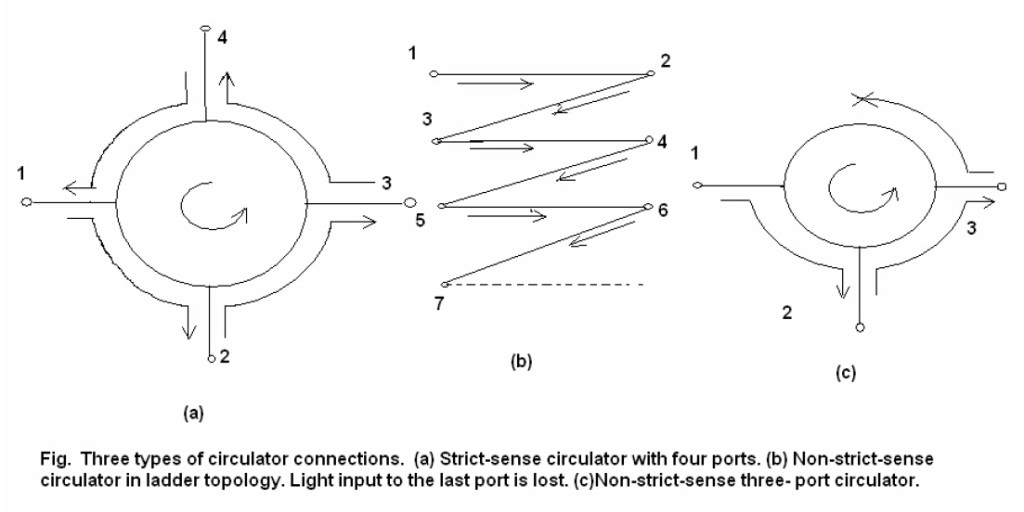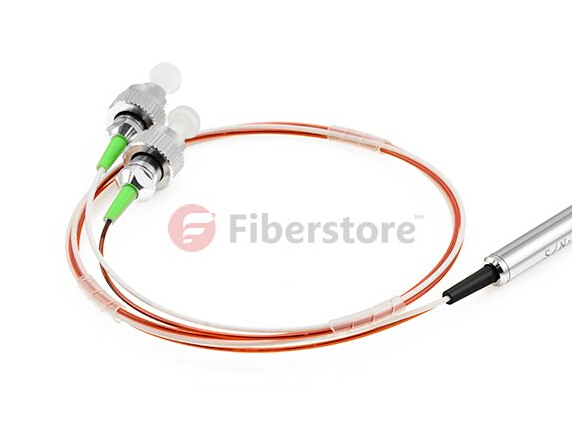Today, passive optical network(PON) is widely used by people as a promising solution for modern access telecommunication networks. With the growing of networking, we need more creative and cost-effective PON systems which are no longer limited by the basic elements. Generally, more common passive optical components include simple fibre optic connectors, splices, couplers/splitters and fixed fibre optic attenuators. Furthermore, optical devices such as switches, variable optical attenuators, circulators, isolators and FBG(Fibre Bragg grating) sensors also are popular in a PON network structure. And this article will focus on description of optical isolators and circulators.
Optical Isolators
A optical isolator operates in a similar way to a optical circulator, but the reverse propagating lightwave is lost instead of being forwarded to a third port for output. A optical isolator is a two-port passive component which transmits light with low attenuation in only one direction. optical isolators’ main function is to reduce or eliminate back reflection and controlling noise. Generally, optical isolators are utilized as both integral and in-line components laser diode modules and optical amplifiers, and to reduce noise due to multi-path reflection in highbit-rate and analog transmission systems. The working principle of optical isolators is based on Polarizers and Faraday Rotators.

Features
- Low insertion loss
- Low Extinction Ratio & High Isolation
- High stability and reliability
- Good uniformity
Applications
- EDFA
- Fibre sensor
- Fibre Optical Instrument
Optical Circulators
A fibre circulator is generally a three-port circle device designed serving as optical one-way streets to make sure that light entering any port exits from the next. Basically, direct light from port 1 to port 2, port 2 to port 3, with none going 2 to 1. However, there are other choices, for example, 4 ports(has one additional bi-directional port), 1×2 ports, 2×2 ports types in the market as the technology improves. A fibre optic circulator can be used to de-couple transmitted and received signals traveling along the same fibre (in short, the bi-directional transmission), as a kind of branching component that distributes/isolates optical power among optic fibres, depending on the direction of the lightwave propagation. The principle of optical circulators is using the Faraday rotators.

Features
- Low Back Reflection
- High Extinction Ratio
- Low Insertion Loss
- High Return Loss
- Excellent environmental stability and reliability
Applications
- DWDM system
- Add-Drop Multiplexing
- Fibre Amplifier
- Fibre Sensor
- Chromatic Dispersion Compensation Devices
- Fibre Bragg Grating
- Polarization maintaining optical system
Passive Optical Components in FS.COM
Fiberstore is always focused on optical communication products, definitely including the fibre optic passive components. Passive Optical Components, including optical isolators, optical circulators, fibre collimators, and optical attenuators are all offered in Fiberstore with highly quality and competitive prices. Additionally, we welcome any custom requirement in numerous parameter designs, such as beam spot diameter, working distance, dimension etc.
Read More Related Article:








